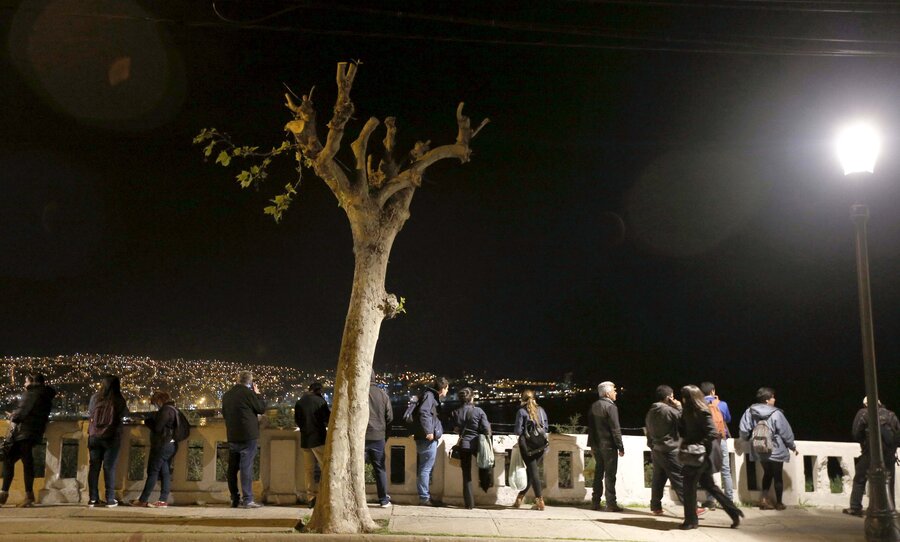Strong earthquake rattles Chile, sparks tsunami warning
Loading...
| SANTIAGO
A magnitude 8.3 earthquake hit off the coast of Chile on Wednesday, shaking buildings in the capital city of Santiago and generating a tsunami warning for Chile and Peru.
Chile's government urged residents to evacuate the coastline. The mayor of Illapel, which is near the epicenter, said on a radio broadcast that one person had been killed by a collapsing wall, and 15 others were reported injured. Some homes were damaged as well.
Reuters witnesses said the quake was felt as far away as the Argentine capital, Buenos Aires, on the eastern seaboard of South America.
The quake struck 105 miles (169 km) north of Valparaiso at a depth of 15.5 miles (25 km), and was originally reported as magnitude 7.9, the U.S. Geological Survey said.
Hazardous tsunami waves from the quake were possible along the coasts of Chile and Peru within the next several hours, the Pacific Tsunami Warning Center said. A tsunami watch was also issued for Hawaii.
Peruvian authorities said waves of less than 1 meter (3 feet) could hit the country's southern shoreline at 8:30 p.m. local time (0130 GMT Thursday) and urged people to avoid coastal areas.
If tsunami waves impact Hawaii, the estimated earliest arrival time would be 3:06 a.m. Hawaii Standard Time (1306 GMT) on Thursday, the Pacific Tsunami Warning Center said.
Less than an hour after the initial earthquake, three aftershocks all greater than magnitudes 6.1 struck the region, USGS reported.
Chile's state copper miner Codelco said none of its workers were injured and there was no damage to its installations following the quake in the world's top copper exporter. Antofagasta Plc also reported no damage to its flagship Los Pelambres copper mine.
In February 2010, an 8.8-magnitude earthquake in central-southern Chile triggered a massive tsunami, and more than 500 people were killed.
In the hours following that quake, President Michelle Bachelet and other government officials misjudged the extent of damage and declined offers of international aid. That delayed the flow of assistance to disaster areas, leaving many survivors feeling they had been abandoned by the government.
Compounding matters, the Chilean navy's catastrophe-alert system failed to warn the population of impending tsunamis, leaving hundreds who survived the initial quake to be engulfed by massive waves that followed.
Bachelets government was also slow to prevent looting following the quake, and fumbled the death toll, later rolling back its estimate and saying missing people who later turned up alive had been mistakenly included.
(Reporting by Anthony Esposito; Additional reporting by Marco Aquino in Lima; Writing by Lisa Shumaker; Editing by Toni Reinhold and Ken Wills)








